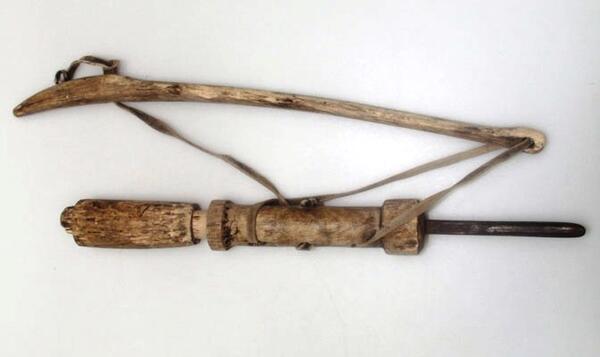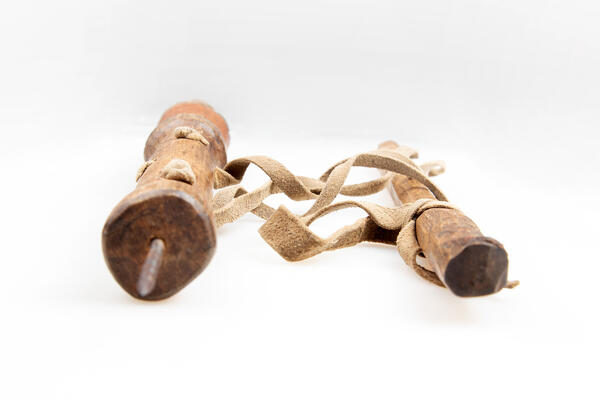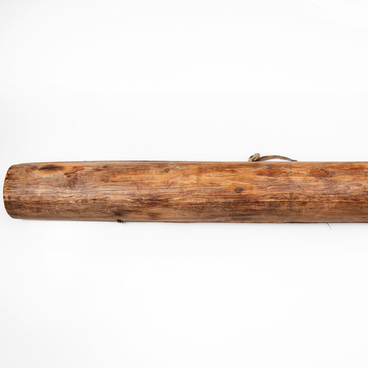In addition to reindeer herding, fishing and hunting, the Nenets spend a lot of time doing household chores in the camp. In the old days, they made all household items and utensils on their own using natural materials. Each artisan used a personal set of tools. It included an ax, several types of knives, a saw, a planer, an awl and a traditional bow drill. This is an all-purpose tool for drilling holes in wood, bone and metal.
A bow drill consists of several parts: a wooden rod, a spindle, a metal tip, a leather strap and a bow. The wooden bow is made in the form of a solid, slightly curved stick that is equally thick along the entire length. The drill is a drum, on one side of which there is a handle, and on the other, a blade that is fixed with pieces of wood. The drum has three through holes for the straps that are tied at the ends with knots. The wooden part of the drill was made from birch, alder, spruce and larch, and the metal rod was handmade from available material — for example, from the teeth of an old pitchfork. The metal was heated, and then additionally lubricated with fish oil and fired over a burning birch bark.
Using a bow drill is not difficult; Nenets boys began to work with it from childhood. One has to hold the drill by the coil with the left hand and move the bow back and forth with the right. Due to the movement of the straps, the drill rotates. The original bow drill can be easily carried along and moved around, and the person using it does not need electricity. Modern Nenets can buy factory-made tools and equipment, but the bow drill still remains one of the most important tools in the traditional life of the peoples of Yamal.
A bow drill consists of several parts: a wooden rod, a spindle, a metal tip, a leather strap and a bow. The wooden bow is made in the form of a solid, slightly curved stick that is equally thick along the entire length. The drill is a drum, on one side of which there is a handle, and on the other, a blade that is fixed with pieces of wood. The drum has three through holes for the straps that are tied at the ends with knots. The wooden part of the drill was made from birch, alder, spruce and larch, and the metal rod was handmade from available material — for example, from the teeth of an old pitchfork. The metal was heated, and then additionally lubricated with fish oil and fired over a burning birch bark.
The bow drill was indispensable for the manufacture of many traditional products: fishing gear, traps, vehicles, and outbuildings. With a drill, people made holes in the sledge runners for stanchions, in the wooden parts of the harness, it was used to drill sheet iron and bone for various pins. If a large hole was needed, then several holes were drilled, and the partitions were removed with a knife.
Using a bow drill is not difficult; Nenets boys began to work with it from childhood. One has to hold the drill by the coil with the left hand and move the bow back and forth with the right. Due to the movement of the straps, the drill rotates. The original bow drill can be easily carried along and moved around, and the person using it does not need electricity. Modern Nenets can buy factory-made tools and equipment, but the bow drill still remains one of the most important tools in the traditional life of the peoples of Yamal.






